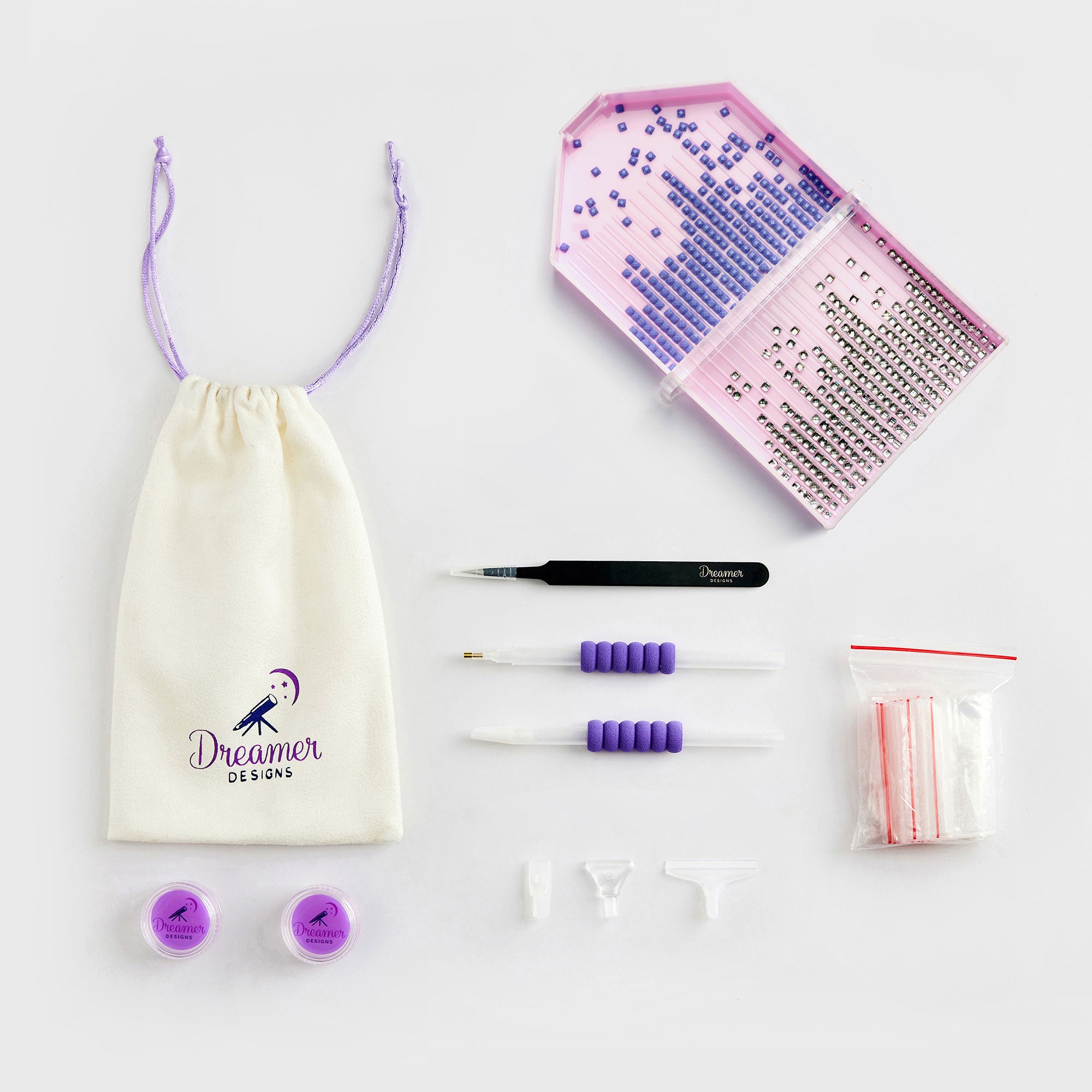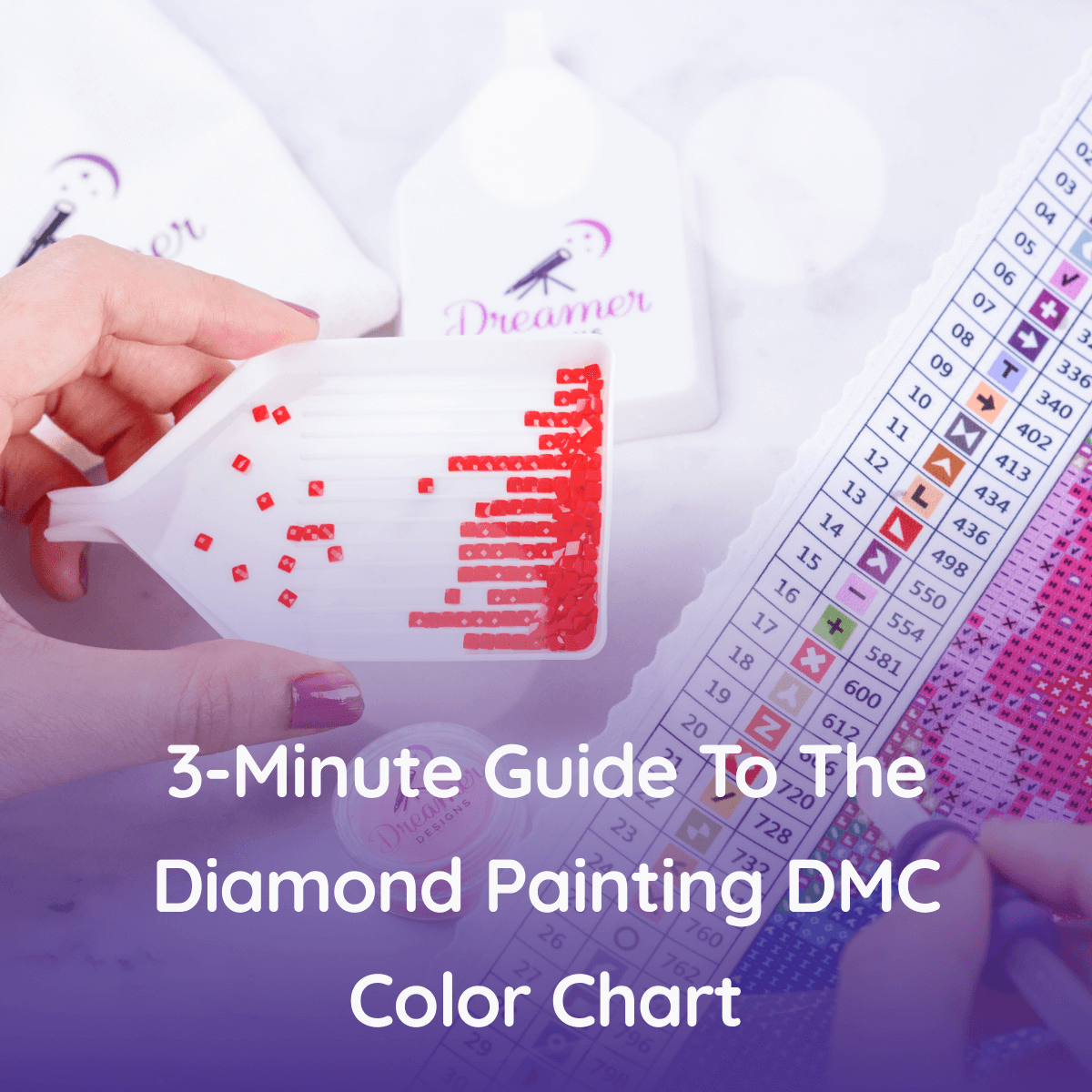When you order a diamond painting kit from Dreamer Designs, every kit comes with presorted diamonds, DMC storage stickers, and of course the Dreamer Cloud Canvas, which features a list of diamond colors along with their DMC codes. So what are these DMC codes all about?
The short answer is that they’re an easy way to categorize and sort colors—but they’re also much more than that! In fact, these codes didn’t originate within the diamond painting community. They have quite a bit of backstory behind them! Here’s a quick guide to help you learn all about how these codes work.
History and Origins of the DMC Color Chart
DMC stands for Dollfus-Mieg and Company, which was founded in 1746. They’re a textile company still in business today, and highly regarded for the embroidery floss and yarn that they produce. They’re the ones who created the DMC codes associated with floss and yarn. The idea is that each color, whether floss or yarn, has a code associated with it. So, DMC 208 is always a dark purple whether you’re buying floss or yarn, and DMC 307 is always a bright yellow.
Throughout the craft world, lots of manufacturers and crafting communities have adopted the DMC color codes as a means to have a unified system classifying a broad range of colors. Diamond painting is no exception—many companies producing drills and kits have also adopted the DMC system.
Why Do Diamond Painters Use DMC Numbers?
There are lots of reasons! To start, the DMC color coding system is a ready-made system that features hundreds of colors, so it’s a standardized way to organize many different shades.
Another reason why it is useful is because it is universal. If you have drills in a specific DMC color and you want to make fiber arts using the same colors, you can easily find yarn or floss to match. This color coding system is convertible, too. You’ll find conversion charts online that will take your DMC codes and convert them to RGB values or hex codes if you need to find shades using a different code format.
Speaking of universality, within the realm of diamond painting, using DMC codes means that if you ever run out of drills in a certain shade, you can always order more in the same color by using the DMC code—though please be aware that between drill manufacturers, there may be very slight color variations.
This system also allows you to sort, store and reuse your drills in future projects. Use the DMC code stickers to keep your drills sorted by their correct codes, and the next time you have a project calling for these colors, feel free to use them!
How to Make Your Own DMC Color Chart
You’ll find DMC color charts available online for threads, yarns and diamond drills—and these are useful for helping identify colors. However, if you’re a serious diamond painter, your best bet will be to make your own DMC color chart.
The reason for this is simple: the DMC system classifies a lot of shades that look very similar to one another. If you’re using a printed chart or a chart displayed on your computer’s monitor, differences in printer technology or the way your monitor displays color may lead to inaccuracies. For instance, you might confuse a slightly pinker red with one that is more orange simply due to the way your monitor or printer’s color is calibrated.
To make your own chart, choose a backer of some sort. Card stock or poster board are two sturdy options that you can easily cut into the shapes and sizes you’d like. Whenever you get new drills, glue one of each color to your chart and write down the corresponding DMC code next to it.
This can be a fun little craft project in and of itself. You can sort codes in numerical order, classify them by color family, or sort your chart by order of rainbow—whatever organization method is easiest and most fun for you!
Once you’ve made a DMC color chart, you’ll find it incredibly useful. Ever accidentally dropped a tray of diamonds on the floor? Use your chart to match up the mixed colors and re-sort them according to their codes. Charts are also useful if you receive drills from manufacturers who do not use the DMC system. Use the chart to identify each shade.
The DMC system might seem confusing at first, but it’s a simple system that helps you keep colors organized. Once you learn how to use it, it’ll make sorting and ordering drills much easier!












Leave a comment
All comments are moderated before being published.
This site is protected by hCaptcha and the hCaptcha Privacy Policy and Terms of Service apply.